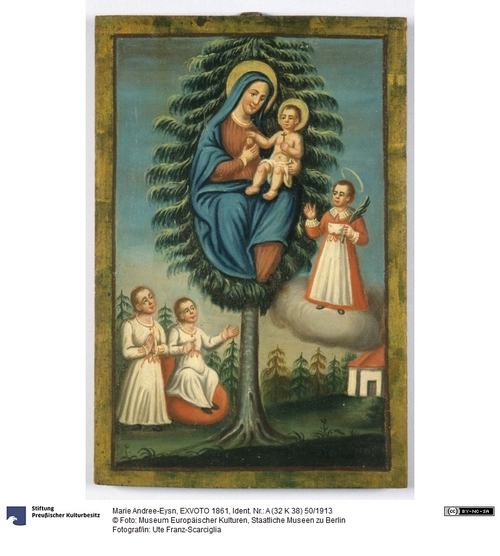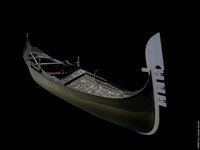Hochformat. Statt Rahmen schmaler Goldrand. In der Bildmitte über die ganze Höhe hinweg eine Lärche, im Wipfel Maria mit Kind. In der Luft rechts daneben auf Wolkenkissen Kind in langem rotem Kleid mit Palmzweig. (Sl Andreas Kapelle, links ein stehendes und ein auf rotem Kissen sitzendes Kind. Auf der Rückseite Bleistiftnotiz, die offensichtlich vom Maler stammt: "Darau Maria von Lärch Judenstein an dem ??? ein Sitzenz und ein stehens Kind". Rechte untere Bildecke: "EXVOTO 1861"
Angaben zur Herkunft:
Marie Andree-Eysn (11.11.1847 - 30.1.1929), Sammler
19. Jahrhundert
Fundort: Maria in der Lärch bei Terfens, Tirol
en

